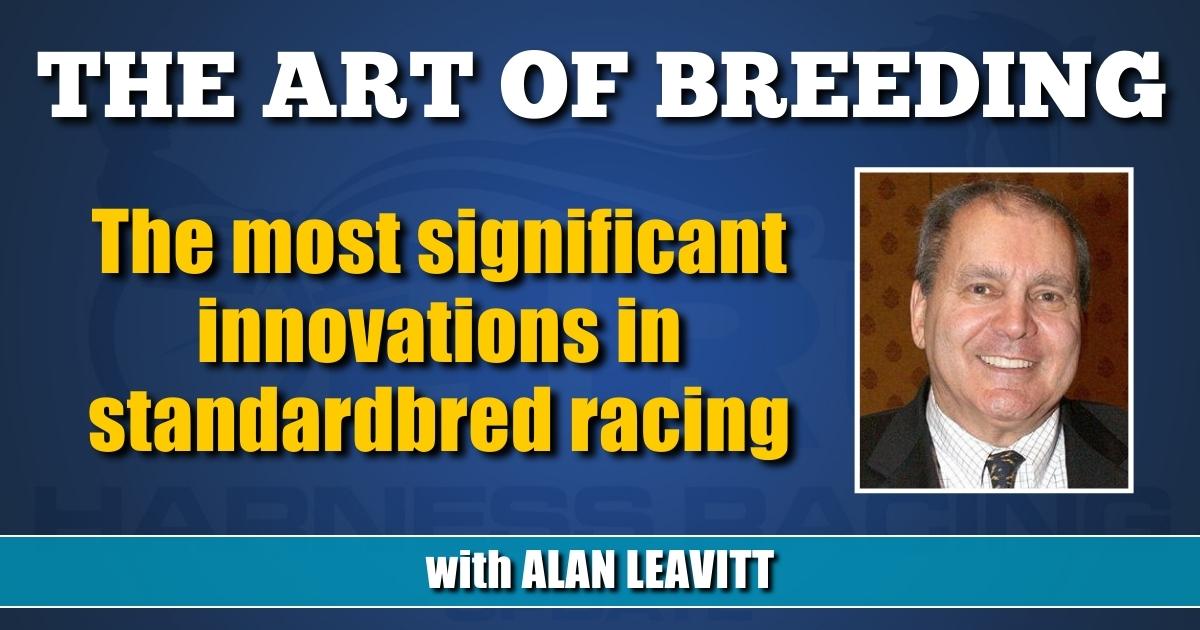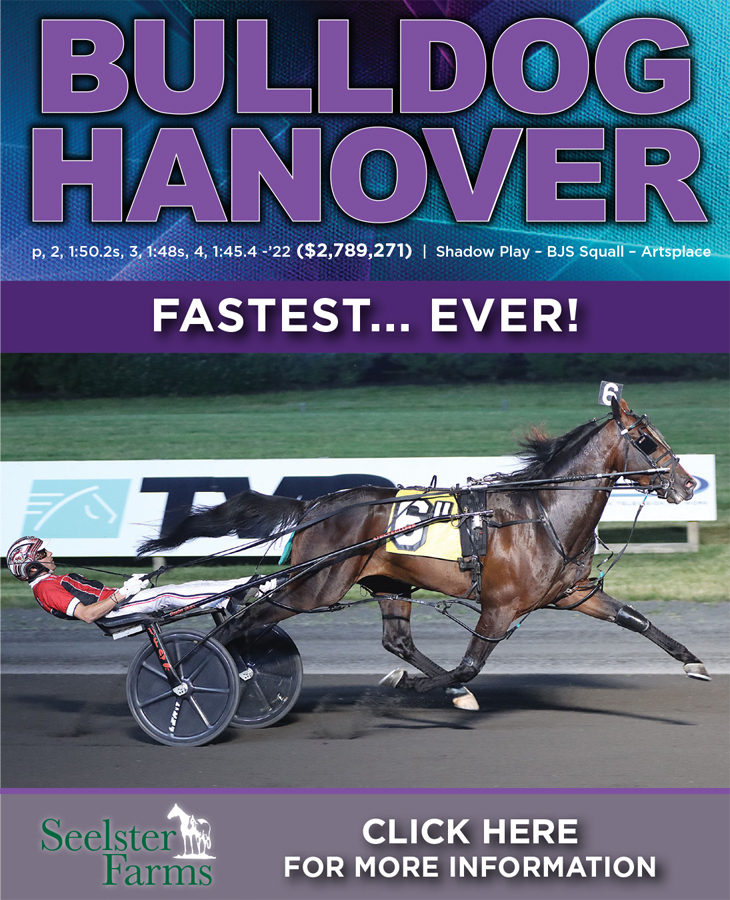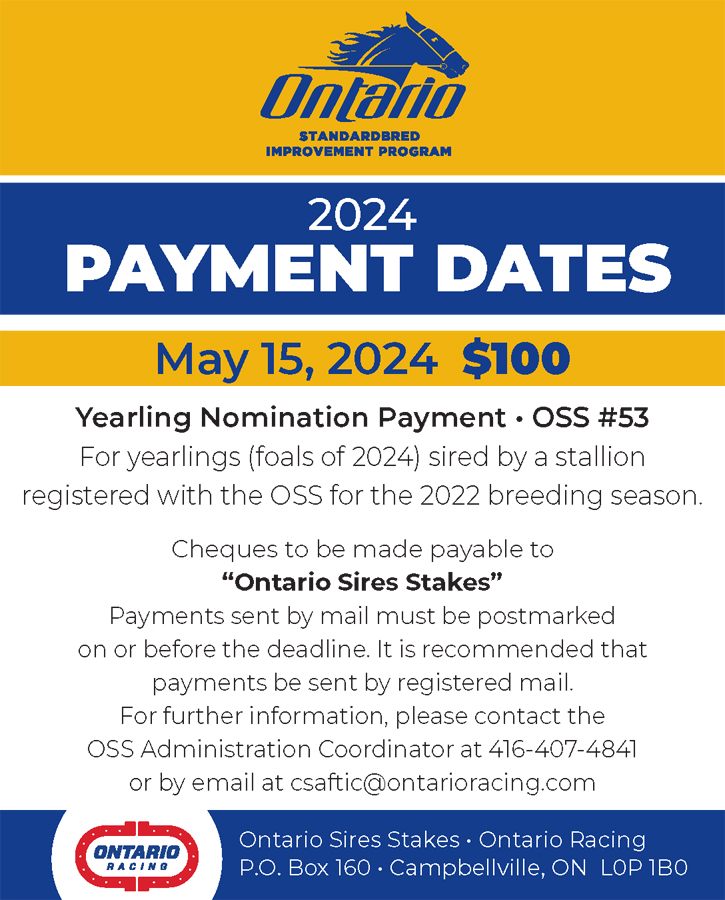

The most significant innovations in standardbred racing
by Alan Leavitt
A quick Mea Culpa about me and trotters.
La Trot has always been my gait of choice. When I was coming up, the best trainers were the ones that won the trotting races. In those days, the trotting gait had not been refined to the point it has reached today, which meant that it took a good bit of balancing, both through shoeing and rigging, plus a good pair of hands, to develop a reliable racing trotter.
This is a good place to digress and recite the most significant events in the evolution of standardbred racing.
The first breakthrough was the invention of the mobile starting gate by Steve Phillips, in New York. Before that, the field would come in a bunch up to the starter, who was stationed on the track at the starting pole.
If they were evenly aligned, the starter would drop his raised arm and the race was on. It could sometimes take as long as two hours to get the field off in a fair start. The mobile starting gate greatly elevated the practice of pari-mutuel betting, which was also transformative. Before some geniuses made fast, fair betting available, betting was handled by trackside bookies, who operated “hand books.” They were pretty much on the level, although occasionally a lone operator who had spread himself too thin would be sneaking out of town as the field hit the seven-eighths pole.
Also, the invention of the plastic wheel disk was literally a life-saver. That was in the mid-‘60s, and I remember Frank Ervin saying he wasn’t going to turn Bret Hanover into a circus horse with those “colored do dads” on his wheels.
But of course he did, along with everyone else, and immediately the terrible accidents on the racetrack stopped. Again, I’m relying on my own early days at the track, but it seemed that every program, day or night, a horse would step through the spokes of somebody else’s wheel, and the result could be fatal.
The final improvement was the trotting hobble, invented by the great horseman Carl Allen. Allen figured out that the use of a hobble designed to keep a horse on the trot worked better than putting all the weight in the front shoes.
Suddenly, the trotters were no longer making breaks, and the pari-mutuel tracks could card trotting races knowing the punters would bet on them.
Before Allen, the big, nighttime tracks like Roosevelt, Yonkers and Sportsman’s offered only enough trotting races to keep the faithful few from driving their racing secretaries crazy with their pleas to write at least a few trotting races a week.
Although the trotters were the more dramatic breed to benefit from the refining of their pedigrees, it was true also for the pacers. Laverne Hanover was the champion Two-Year-Old of his year, but Billy Haughton told me he never hit a pace until January in Florida where Haughton winter trained.
The next giant step forward was on the breeding side of the business. That was the use of Artificial Insemination,
which was first popularized by another great horseman, Hal Jones.
Jones was the manager of Pickwick Farms, in Ohio. The farm was owned by Walter Michael, who was also the president of the USTA. Michael liked dealing in large numbers when it came to horses. He once sent Jones a van full of stallions after one of his sales at Northfield Park, which he owned.
One of the studs at Pickwick was Gene Abbe. Here was a horse whose phenotype, meaning the living horse and including his racing performance, would not exactly knock your socks off.
But Gene Abbe’s genotype, or genetic profile, was clearly potent. He was a real sire, and bred to either one of Michael’s many mares or one of his Ohio’s neighbors, inevitably the result was a better class of racehorse.
So Gene Abbe’s services were in demand, and Hal Jones provided them with Artificial Insemination, or A.I.
Before Jones came to our rescue, a popular stallion’s book was in the neighborhood of 38 mares. After Gene Abbe, the sky was the limit.
In an effort to maintain the diversity of the North American Standardbred, the USTA passed a book limit of 140 mares. However, Standardbred Canada has never followed suit, so if you want to breed your stud to a zillion mares, just stand him in Canada.
I guess you’ll just have to wait until next time to find out how the only family with an ancestor who signed the Declaration of Independence would only race free-legged horses, among other interesting tidbits.














